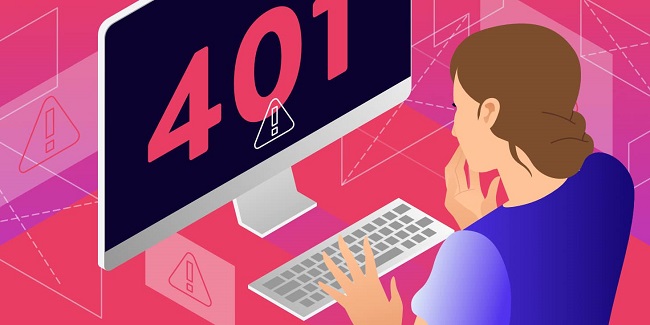The IRQL_NOT_LESS_OR_EQUAL error is one of the many problems that fall under the category of Blue Screen of Death (BSOD) faults in the Windows operating system. When the Windows Operating System encounters a serious problem, Blue Screen of Death errors appear.
The IRQL_NOT_LESS_OR_EQUAL error indicates that the PC is experiencing driver issues or that a corrupted Windows Service is attempting to access a restricted memory region, resulting in unauthorised access.
It results in the laptop’s activities being halted since the current login session is terminated, and the screen turns blue with an error message.
For many mistakes in this class, it’s best to fix the error as soon as possible because leaving it unattended for long periods of time can result in a system crash and data loss, among other things.
![]()
Some of the most common reasons of this type of error are issues with device drivers, such as incompatibility and bad installation, problems with hardware and written records, and virus and malware attacks.
Ensure that the Windows System and, as a result, the device drivers are all properly installed and up-to-date to avoid getting the IRQL_NOT_LESS_OR_EQUAL issue. Checking for updates for the OS and any third-party software system on a regular basis is a great way to do so, and backing up system files is a great way to do so.
Read Also:
Understanding the IRQL_NOT_LESS_OR_EQUAL Error
IRQL_NOT_LESS_OR_EQUAL is a Windows stop error, often indicated by the STOP code 0x0000000A. It signifies a critical system error where the operating system encountered a situation where it couldn’t proceed safely.
This error typically occurs when a driver or piece of hardware tries to access a higher-level interrupt request level (IRQL) that it does not have permission to use.
In simpler terms, the IRQL_NOT_LESS_OR_EQUAL error occurs when a process or driver attempts to access a portion of memory or a resource that is currently in use by another process or at a higher priority level. This results in a system crash to prevent potential data corruption or instability.
Now, let’s explore the common causes behind the IRQL_NOT_LESS_OR_EQUAL error.
Causes of IRQL_NOT_LESS_OR_EQUAL Error
Identifying the root causes of the IRQL_NOT_LESS_OR_EQUAL error is essential for effective troubleshooting. This error can be triggered by various factors, including:
- Faulty or Outdated Drivers: Incompatible, outdated, or corrupted device drivers are a leading cause of this error. When a driver attempts to access an inappropriate memory location or conflicts with other drivers, the error occurs.
- Hardware Issues: Faulty hardware components, such as RAM modules, hard drives, or peripherals, can trigger this error. When hardware malfunctions, it can lead to memory access conflicts.
- Overclocking: Overclocking your CPU or RAM beyond their stable limits can result in system instability and trigger IRQL_NOT_LESS_OR_EQUAL errors.
- Software Conflicts: Incompatible or poorly coded software, including third-party applications and security tools, can lead to conflicts that result in this error.
- Malware Infections: Some types of malware can cause system instability and trigger this error by manipulating system resources.
- Windows Updates: In rare cases, a Windows update may introduce compatibility issues with certain hardware or drivers, leading to this error.
Now, let’s explore practical methods to fix the IRQL_NOT_LESS_OR_EQUAL error.
Methods To Fix IRQL_NOT_LESS_OR_EQUAL Error:
Method 1: Start the computer in Safe Mode to fix the IRQL_NOT_LESS_OR_EQUAL problem in Windows 10.
Step 1: To begin, hold down Shift and press the on-screen power button.
Step 2: While holding down the shift key, select “Restart.”
Step 3: Next, go to Troubleshoot and select the Advanced tab.
Step 4: Finally, go to Startup Settings and select “Restart.”
Step 5: The system will restart once you click, and you will be able to select Safe Mode.
If the IRQL NOT LESS OR EQUAL error persists, it means that the issue is with the hardware rather than the software, drivers, or third-party apps.
Read Also:
Method 2: RAM Debugging
Step 1: To locate the flaws inside the hardware, Windows supplies us with an already installed programme.
Step 2: To open the Search bar, press Windows + S and search “Windows Memory Diagnostic.”
Step 3: Select “Windows Memory Diagnostic” from the drop-down menu.
Step 4: This function will present you with two alternatives; choose “Restart now” and run a troubleshooting check. The scan can be run immediately or after the system has been restarted.
Step 5: Running this scan will reveal a list of faults in the memory or RAM, suggesting that the RAM needs to be replaced.
Step 6: After the system has been replaced, it should work properly.
Method 3: Disabling the Memory Cache
There are two methods for turning off the memory cache:
1st option:
Step 1: To use the Basic input/output system feature, press the BIOS set-up keys or the F2 key.
Step 2: Next, select “Memory Settings.” After that, turn off the “Memory caching option.”
2nd option:
Step 1: Open the Search menu by pressing Windows + S and typing “Device Manager.”
Step 2: Select Disk Drives from the drop-down menu, and you’ll see the name of a drive.
Step 3: Open the drive and navigate to the “Policies” pane.
Step 4: Select the option to disable the driver and then click OK.
Step 5: Finally, reboot your computer to apply the modifications.
Method 4: Disabling Connected Devices and Drivers
Step 1: Disconnect all devices connected to the computer, such as USB sticks, flash drives, and other external storage devices.
Step 2: Disconnect any device drivers that are attached to the system.
Step 3: Restart the computer without the external devices plugged in.
Step 4: Enable each device one by one in a sequential order and see whether the error reappears.
Step 5: If it does, it confirms that the driver/device you just activated is the source of the problem, and you must take appropriate action.
Step 6: Uninstall the driver in “Safe Mode” and then reinstall it to fix the IRQL_NOT_LESS_OR_EQUAL issue.
Method 5: Using the Command Prompt to Repair Corrupted Registry Files
Step 1: Press Windows + S to bring up the search menu, and type “cmd” into it.
Step 2: Log in as an administrator to “Command Prompt.”
Step 3: In the command prompt, type “sfc /scannow.”
Step 4: After the scanning is complete, restart the machine.
Before completing any operations that may or may not entail deleting or modifying of any kind, it is always a good idea to back up your Registry.
Method 6: Restoring the system
Windows releases updates on a regular basis to improve the operating system’s performance. Sometimes, rather than making things function more smoothly, an update makes things worse. As a result, we propose generating system restoration checkpoints to revert back to the settings prior to the update.
If you’ve already created a restore point, use it to go back to a time when the computer was working normally. If not, go on to a different option.
Step 1: To start “Run,” press Windows + R on your keyboard.
Step 2: Type “rstrui.exe” into the command prompt.
Step 3: Select “Choose a different restoration point” from the drop-down menu.
Step 4: Pick a good checkpoint and enter it.
Step 5: Select “Finish” from the drop-down menu.
Restart your computer and wait for the System Restore process to finish.
Easy Methods to Fix IRQL_NOT_LESS_OR_EQUAL Error
Resolving the IRQL_NOT_LESS_OR_EQUAL error requires a systematic approach to identify and address the underlying causes. Here are some easy and effective methods to help you troubleshoot and fix this error:
1. Update or Roll Back Drivers:
- Go to Device Manager by right-clicking on the Start button and selecting it.
- Expand the categories and update or roll back drivers, especially those related to hardware components like the GPU, network adapters, and chipset.
- If you recently updated a driver and the error started occurring, rolling back to the previous driver version might resolve the issue.
2. Test Your RAM:
- RAM issues are a common cause of this error. Run the Windows Memory Diagnostic tool to check for memory problems.
- You can access this tool by searching for “Windows Memory Diagnostic” in the Windows search bar and following the on-screen instructions.
3. Check for Hardware Issues:
- Inspect your hardware components for physical damage or loose connections. Re-seat RAM modules and other components if necessary.
- Run hardware diagnostics or use third-party tools to identify hardware problems.
4. Disable Overclocking:
- If you have overclocked your CPU or RAM, revert to the default settings to see if stability is restored.
5. Uninstall Problematic Software:
- If the error occurred after installing specific software, uninstall or update that software to resolve any compatibility issues.
6. Scan for Malware:
- Perform a thorough malware scan using reputable antivirus or antimalware software to eliminate potential threats causing system instability.
7. Restore to a Previous State:
- Use System Restore to revert your Windows system to a previous state when it was functioning correctly. This can help undo recent changes that may have triggered the error.
8. Install Windows Updates:
- Ensure that your operating system is up to date with the latest Windows updates and patches. Microsoft often releases updates to fix known bugs and improve system stability.
9. Check for BIOS/UEFI Updates:
- Outdated BIOS/UEFI firmware can lead to hardware-related errors. Check your motherboard manufacturer’s website for BIOS updates and apply them if available.
10. Perform a Clean Windows Install: – As a last resort, if none of the above methods work, you may need to perform a clean installation of Windows. Ensure that you back up your data before proceeding.
Read Also:
- Fallout 4 Perk Chart
- Killer Control Center
- System Interrupts
- Nvlddmkm.sys
- Unexpected Store Exception
Conclusion
Depending on how you approach the situation, the error can be devastating or a small annoyance. It’s crucial to recognise that you got lucky, because this problem means that some files have gone missing or are corrupted, and it’s imperative that you search for them or risk getting the BSOD error, which is far more difficult to deal with.
As a result, be cautious and use any of the measures listed above to ensure that the system runs well. Thank you for taking the time to read this!


